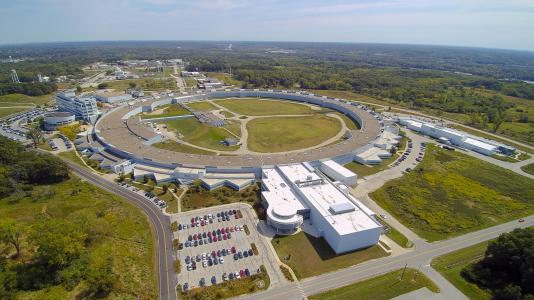
ARGONNE, Ill. — Seen from the air, the storage ring of the Advanced Photon Source (APS) makes up the largest and most distinctive feature of the U.S. Department of Energy’s Argonne National Laboratory. The symbolism of its geographic prominence underscores the importance of the APS and the research permitted by the hard X-rays that it produces.
Basic and applied research that employs photon science opens up new frontiers in materials design, healthcare, imaging and basic science. Based on any of a variety of different criteria — number of users, publications or deposits in the Protein Data Bank, for example — the APS stands out as the premier hard X-ray research facility in the Western Hemisphere.
In operation since 1996, the APS produces the brightest X-rays in the Western Hemisphere. In contrast to previous light sources, the APS enables scientists to complete their experiments more quickly, less expensively and at a greater level of detail. The APS currently comprises 34 sectors with more than 100 separate beamlines — all of which operate in parallel. “APS users represent almost all areas of science,” said Murray Gibson, associate laboratory director for photon sciences. “Photons from the APS can illuminate everything from archaeological artifacts to next-generation magnetic hard disks.”
The APS draws users from scientific organizations, industries and universities around the world. In 2007, the APS hosted 3,412 users from 49 of the 50 states, the District of Columbia and a multitude of foreigh nations. “The APS is important to Argonne because the work that it allows is important to the country,” Gibson said. “We’re improving American technological competitiveness, economic competitiveness, health and leadership in basic science.”
Since its opening, the APS has constantly evolved, adding new beamlines and additional capabilities. In 2006, Argonne opened the Center for Nanoscale Materials, a leading-edge nanotechnology facility located on the APS ring. The X-rays produced by the APS reveal new information about never-before-seen tiny structures.
Gibson hopes to continue to expand the APS with a $300 to $400 million upgrade that would take place within the next five years. With this funding from the Department of Energy, the APS could add many new beamlines, improve the performance of the accelerator and overhaul its now 13-year-old infrastructure. “A commitment to the APS upgrade could revolutionize the tools that are available to the researchers coming to the APS from all over the world,” Gibson said. “This facility’s unique capabilities and reputation for excellence make it a great candidate for future investment.”